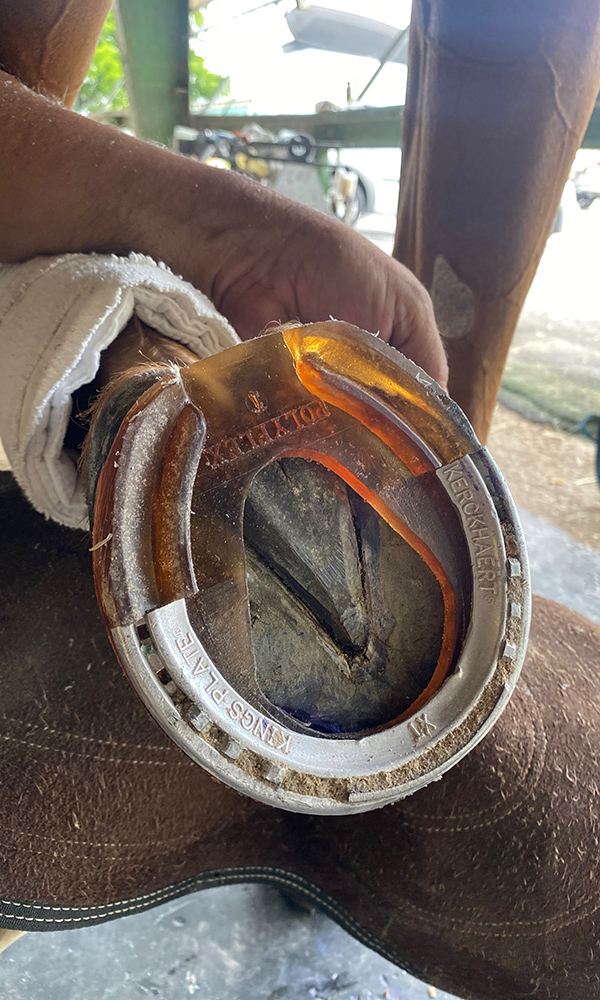All athletes swear by their own particular performance-boosting sneaker. Take LeBron James, Mike Trout or Serena Williams: They wouldn’t dream of lacing up for the basketball court, baseball diamond or tennis court without their signature pair. So would it surprise you to learn that Thoroughbred racehorses are also massive shoe-heads?
The most popular horseshoes are called “plates,” which attach directly to the horses’ hooves (or “feet”)—and the most popular plates are the lightweight aluminum kind. Certain horseshoe manufacturers such as Victory, Kerckhaert and Thoro’Bred are the go-to brands for trainers, with their logos stamped into the edge of each shoe (some even carry as much prestige as the Nike swoosh does on its sneakers). Shoe manufacturers sell plates in traditional horseshoe shapes, but it’s up to experts, or “platers,” to bend and shape the shoes to a horse’s specific needs, creating the ultimate custom fit.
Just like human athletes, horses can also sometimes have injuries or conditions that require a shoe with more support. After Triple Crown winner American Pharoah bruised his left front foot, for example, a half-plate was used to protect the injured part of one of his hooves.
Here’s a look at the different types of shoes racehorses wear to win.
Barefoot
Horses can sometimes go barefoot, although most racehorses wear shoes to protect their hooves from being worn down.
Foot Facts: Lexington’s Keeneland Race Course used a kinder-on-the-feet synthetic Polytrack surface for eight years, leading to many shoeless horse victories.

Aluminum Plates
Nearly all flat track racehorses within the last 40-50 years have worn aluminum plates. Aluminum is one-third the weight of steel, and the lighter metal shoe causes less fatigue on its wearers’ feet.
Foot Facts: In 2019, Code of Honor won the Travers Stakes wearing aluminum shoes.
Plastic Shoes
Metal shoes are nailed onto a horse’s hooves, whereas plastic shoes, made of polyurethane, are glued on.
Foot Facts: Mucho Macho Man won the 2013 Breeders’ Cup wearing plastic shoes.
Shock Absorbers
Both aluminum and steel shoes can include synthetic pads to provide extra cushion and support to equine athletes. (Fun fact: Curtis Burns of No Anvil, LLC developed the Polyflex plastic shoe locally, in the garage of his Saratoga home.) For horses with a heel injury, a blended poly/aluminum shoe offers its wearer more cushioning.
Foot Facts: Sarasota County is one Thoroughbred that prefers this type of shoe, because he has the horse’s equivalent of athlete’s foot. Due to the added hoof structure, he has pulled off wins in several races at Gulfstream Park.
Traction Controllers
Some tracks allow “turn downs,” where the heels of the horse’s shoe are bent downward for more grip; most tracks, however, have banned calks, which provide traction, because when used incorrectly, they can lead to injuries.
Foot Facts: The weather determines what, if any, traction control is used. Rain can make tracks muddy, so platers will add “stickers” to give better traction. Race track officials often announce the usage, so bettors can use that information when wagering.


